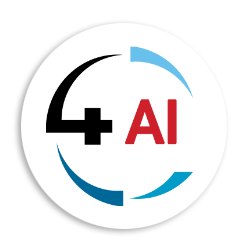Blog - Channel Partner
Dynamics 365 CE vs Salesforce: Which CRM Is Right for You?

If you’re a CXO standing at the crossroads of a CRM decision—first off, I get it. It’s not just about picking software. You’re choosing a partner that will either elevate your customer experience, streamline your operations, and empower your teams—or... tie you up in complexity and costs you didn't see coming.
The CRM space is crowded, but let’s be honest—this is really a two-horse race. Microsoft Dynamics 365 Customer Engagement (CE) and Salesforce. Both are giants. Both promise results. But which one is right for you?
Let’s walk through this together—not as a feature checklist, but more like the kind of chat we’d have over coffee, where we get into the real stuff.
The Lay of the Land
Imagine this: You’re running a growing business, or perhaps leading transformation in an enterprise that’s got some legacy tools hanging around. You’re under pressure to innovate, get more from your data, and show quick wins.
Your team says, “We need a CRM.” But what they mean is: “We need a better way to work together, serve customers, and stay ahead.”
And that’s where these two platforms come in.
Salesforce has been the poster child of CRM for years. It’s cloud-native, sleek, and has built an entire ecosystem of apps and partners around it. On the other hand, Dynamics 365 CE, especially in its modern iteration, is tightly woven into the Microsoft ecosystem—if your organization already uses Microsoft 365, Teams, or Power BI, that’s no small thing.
So how do you choose?
1. Let’s Talk Integration (Because Silos Suck)
Here's a simple question: How much of your current tech stack is Microsoft?
If your teams live in Outlook, run projects through Teams, and crunch numbers in Excel, Dynamics 365 CE might feel like it was custom-made for you. I’ve seen organizations plug it in and suddenly feel like their CRM isn’t a separate platform—it’s just part of how they already work.
For example, I once worked with a mid-sized bank that was struggling with customer onboarding across departments. They moved to Dynamics CE and within months, everything—from customer data to case history—was available in Outlook. No more tab-hopping. It was almost boring how well it worked. And in enterprise IT, boring is good.
Salesforce can integrate with Microsoft tools too, but it’s not native. There are plugins, connectors, and yes, they usually work—but it’s an extra layer, and it shows.
So ask yourself: Do I want my CRM to feel like an add-on, or like it’s part of the fabric?
2. Customization vs. Complexity
Salesforce is incredibly customizable. You can build entire apps on its platform. But with great power comes great… configuration. And consultants. Lots of them.
Dynamics 365 CE also offers rich customization, but where it shines is in low-code configuration through Power Platform. If you’ve got a savvy business analyst or even a curious intern with time, they can spin up apps, automate approvals, and create dashboards—without waiting six weeks for a developer.
Here’s a true story: A retail group I advised had a marketing manager who built a campaign approval workflow in Power Automate. No IT ticket, no cost. Just clicked it together. Imagine the time that saved.
With Salesforce, you’d likely need someone certified (and billable).
Which brings me to the next point…
3. Let’s Talk Money
Let’s be real—licensing is a rabbit hole. But high-level? Salesforce is more expensive. Not just in license costs, but in ongoing implementation and admin effort.
Many CXOs I speak with tell me the same thing: “We thought Salesforce would be plug-and-play, but it became a whole project.”
Dynamics 365 CE tends to come in a bit leaner, especially if you're bundling with Microsoft 365 or already using Azure services. And because it’s part of a broader platform (Power Apps, Power BI, etc.), the total cost of ownership often surprises people—in a good way.
That said, if your organization is already deep into Salesforce (or if you're a startup flush with funding and aiming to scale fast), the investment might be worth it.
Just go in with your eyes open.
4. User Experience: Who Will Actually Use This?
I’ve seen CRMs live or die based on one thing: whether the sales and service teams actually use them.
Salesforce has a slick interface. It’s built for users who are digitally native. But sometimes, it’s a bit… too much. I once sat with a field sales team that had eleven tabs open in their Salesforce instance. “Which tab do I log the call in again?” one rep asked. Oof.
Dynamics 365 CE has a cleaner, more familiar interface—especially for users coming from Microsoft apps. Navigation is simpler, and with recent updates, the UI feels modern and responsive.
Again, consider your team: Are they tech-forward, or do they prefer simplicity?
The answer will point you toward the better fit.
5. AI and Insights: What’s Under the Hood?
Both platforms are leaning hard into AI—and that’s good news.
Salesforce has Einstein, which does predictive lead scoring, next-best actions, and more. It’s been in market longer and has mature features for organizations that can afford the full experience.
Microsoft is catching up fast with Copilot for Dynamics. The difference? Microsoft’s AI is embedded across Office, Teams, and Power Platform. So your sales rep gets AI suggestions in Outlook, your marketer gets insights in Teams, and your service agent gets summaries inside CE—all from the same AI fabric.
In one client case, a sales director used Copilot in Teams to prepare for a client meeting. The AI summarized the last six interactions, pulled insights from LinkedIn, and drafted a follow-up email—without opening the CRM.
That’s not just cool—it’s transformational.
So… Which One Is Right for You?
If your organization:
- Lives in Microsoft tools (Outlook, Teams, Excel)
- Needs a CRM that’s deeply integrated with your day-to-day
- Wants a platform to build on (Power Platform, low-code tools)
- Is cost-sensitive or prefers better TCO
- Values familiarity and ease of use
Then Dynamics 365 CE is probably the smarter choice.
If your organization:
- Has used Salesforce before and loved it
- Is building a digital-first, app-heavy experience
- Has the resources to invest in high-end customizations
- Prioritizes an open ecosystem outside the Microsoft world
Then Salesforce may be the way to go.
But here’s the kicker—both are great. The question isn’t which is better overall, but which is better for you, right now, with the team you have and the direction you're headed.
Final Thoughts
As a CXO, your job isn’t to fall in love with tech—it’s to choose the tools that unlock your team’s potential and your company’s next chapter.
So ask yourself:
- What kind of tech partner do we want?
- How much change can our team realistically absorb?
- Where will we be in 3 years, and will this platform grow with us?
The answer isn’t in a feature matrix—it’s in your strategy, your culture, and your goals.
Whichever route you take, make sure you’re not just buying software. You’re investing in capability, in efficiency, in connection.
And that’s worth getting right.
Your Turn
Are you weighing Dynamics 365 CE vs. Salesforce right now? What matters most to your team—ease of use, deep integrations, cost, or AI capabilities?
Let’s talk. I’d love to hear your thoughts, and maybe share a few more war stories that didn’t make it into this post.
For more information, please feel free to contact us at This email address is being protected from spambots. You need JavaScript enabled to view it.


